II - Stability #
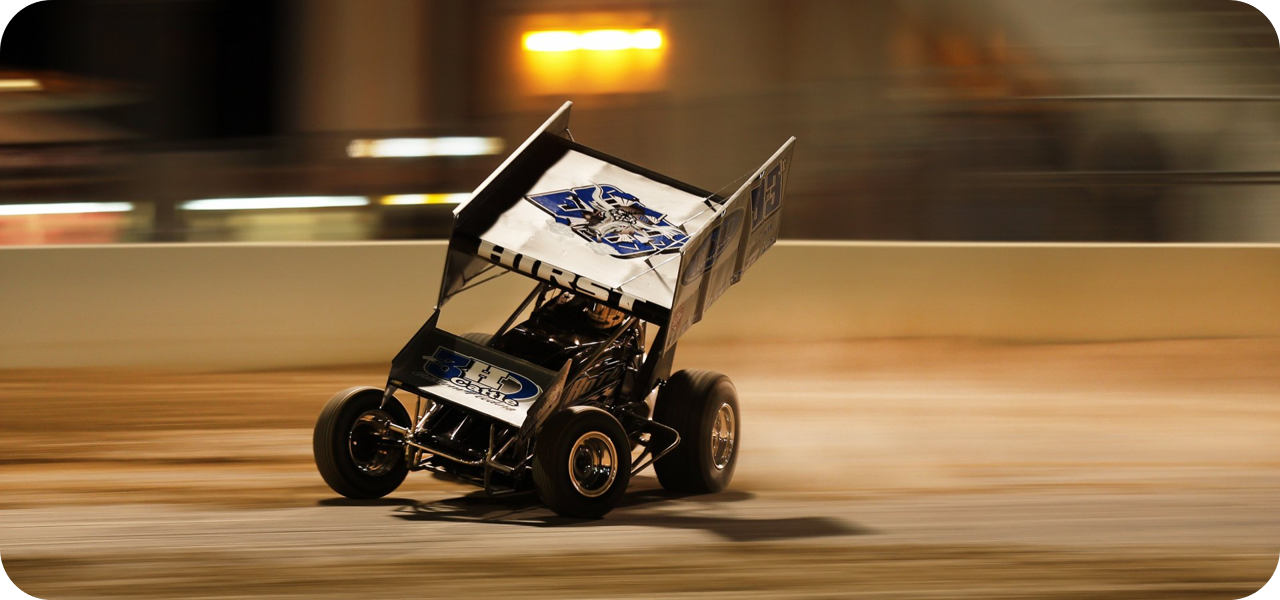
Sprint car competing in the World of Outlaws series. Photo courtesy of Larry Chen of Speedhunters.
Introductory Thoughts #
Motorsport is a symbiosis of man, machine and environment. It’s been shown that drag, downforce and sideforce alter the ability of a car to accelerate longitudinally or laterally, expanding the peak potential of the car. However, outright performance is only part of the equation.
A racecar only performs as well as the driver instructs it to. Part of this is how much confidence the car inspires in the driver. It takes just a single instance of the vehicle responding erratically to lower driver confidence. This discourages them from driving on the ragged edge in subsequent laps, leaving performance on the table.
Stability #
Stability is defined as, upon being unsettled, whether the car responds in a way that magnifies the instability, or responds in a way that reduces it. Aerodynamicists can make a vehicle more or less stable by influencing where on the car the forces act.
If the downforce acts predominantly on the rear axle, at high speeds, the rear tires have much more grip than the fronts. The lack of front grip forces the car to trace a wider line than intended by the driver. This is defined as understeer (or, in NASCAR circles, the car is ‘tight’). While annoying, understeer is at least a stable condition.
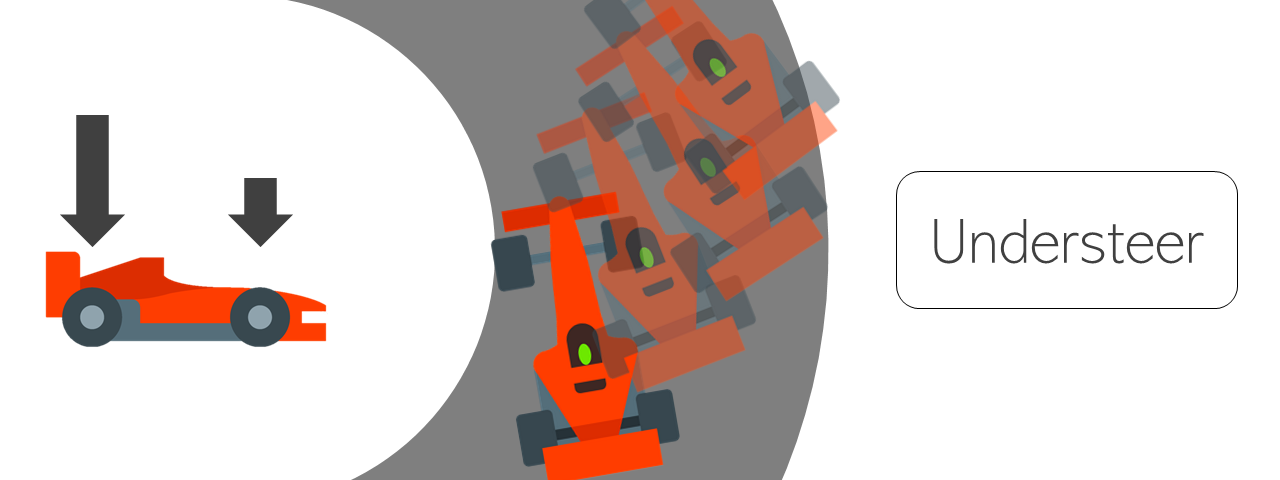
Rear biased downforce typically results in high speed understeer.
If the downforce acts primarily on the front axle, at high speed, the front tires have much more grip than the rears. The lack of rear grip gives the car a tendency to spin. This is oversteer (the car is ‘loose’). Oversteer is an unstable condition.

Front biased downforce typically results in high speed oversteer.
In general, a racecar is set up to oversteer at low speeds, and understeer at high speeds. Low speed oversteer helps the car rotate through very tight corners. High speed understeer gives the driver confidence the car will not swap ends when throwing it into a corner at, or slightly above, the limit.
It’s often very easy to make large amounts of downforce on one end of the car or other. However, without the ability to balance that performance on the other axle, car stability suffers. Therefore, the desire to maximize outright performance has to be balanced with the need to maintain drivability.
Sideforce can also help with stability. This most commonly manifests in the form of large fins mounted to the rear of racecar, providing a sort of ‘weather cocking’ effect, helping to reduce oversteer at high yaw angles.
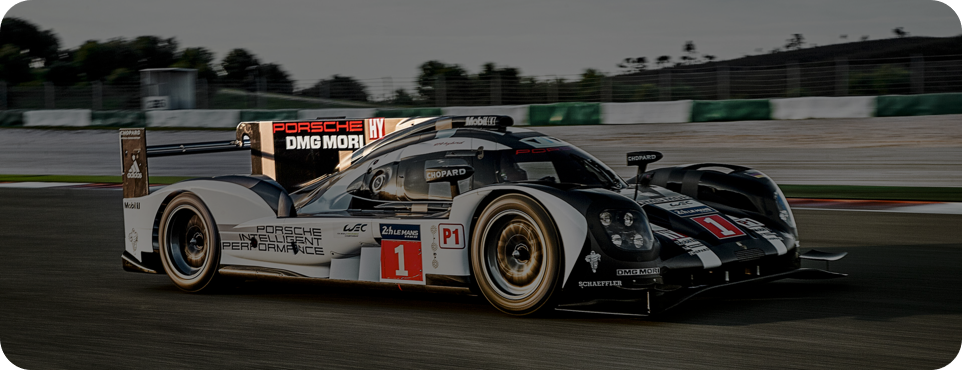
Large vertical fin on the Porsche 919 Hybrid LMP1 car. This fin provides additional rear end stability.
Attitudes #
The violence with which a modern racecar attacks a circuit can’t be understated. The various forces acting on the car cause it to rapidly cycle through yaw, pitch, roll and heave, often times all 4 motions at the same time.
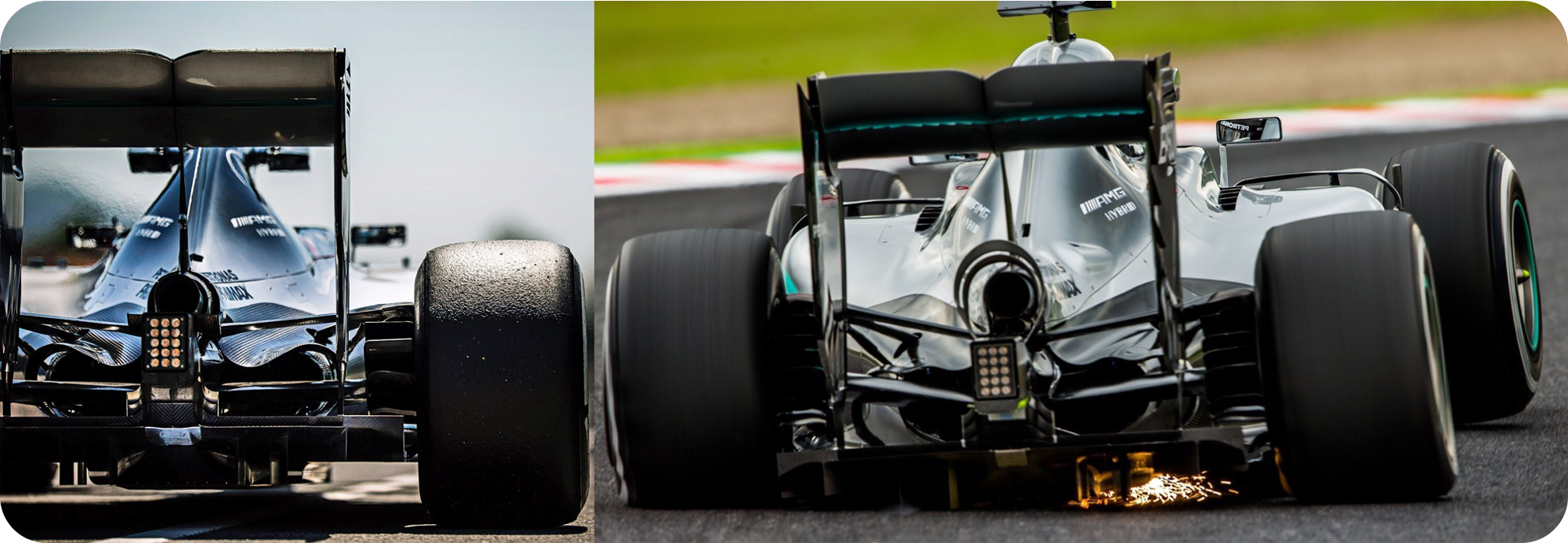
| Image | Description |
|---|---|
| Left | Mercedes W06 - Sitting in pitlane. Picture from Car Magazine. |
| Right | Mercedes W06 - Attacking a corner at Suzuka 2016. The car is simultaneously heaved, rolled, pitched and yawed. |
Aerodynamic phenomenon, and therefore vehicle performance, naturally vary across these range of attitudes. However, it is the responsibility of the aerodynamicist to ensure the changes are not erratic in the working range of the car. Vehicle predictability at the limit is as much a safety criteria as it is performance.
Failure to assess and develop the car under a proper range of attitudes can often lead to dangerous consequences, as demonstrated here and here.
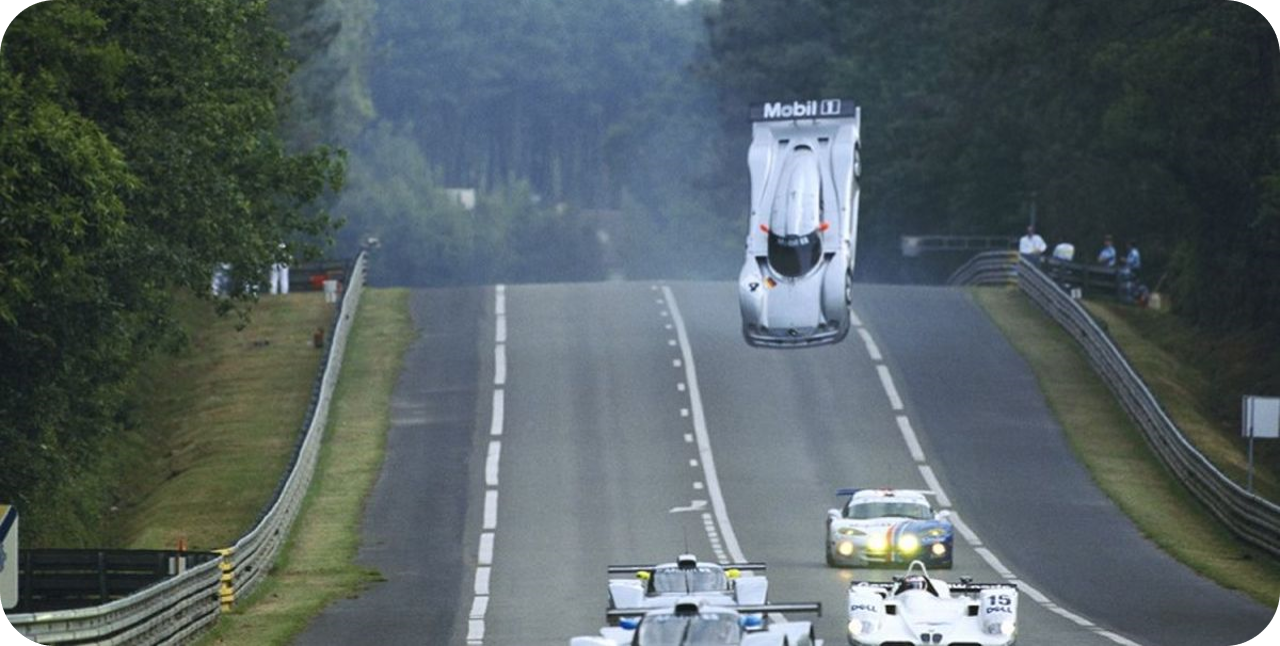
Peter Dumbreck’s car inadvertently catching air. Photo credit: Frédéric Le Floc’h / DPPI.
Ambient Conditions #
A modern racing circuit is massive, spanning over a large area of land. The ambient wind conditions can vary significantly on the various corners of the track.
A headwind or tailwind markedly changes the airspeed felt by the bodywork. In a grip-limited corner, a headwind in a corner is generally welcome, as it increases downforce. In a power-limited straight, a tailwind is favored as it reduces drag. In a sport where the drivers are at the razors edge of vehicle capability, misjudging the wind carries a stiff penalty that will catch an unsuspecting driver out, causing them to overdrive a corner and potentially put the car into the wall.
A crosswind changes the effective vehicle yaw angle. If crosswind resilience is not an core design criteria for the aerodynamicists, vehicle performance suffers. In the elite racing series, a large component of the role of a race engineer is to frequently monitor local weather patterns and instruct drivers of varying conditions, allowing them to adjust their driving accordingly.
Ambient air temperature and air density have a large influence on car performance as well, as explained in this article.
Concluding Thoughts #
This series concludes with a discussion into Reliability. and the role aerodynamicists play in getting the car to the checkered flag.
For questions or clarifications on this, or any other article, reach out to Nav@WorksAero.com.